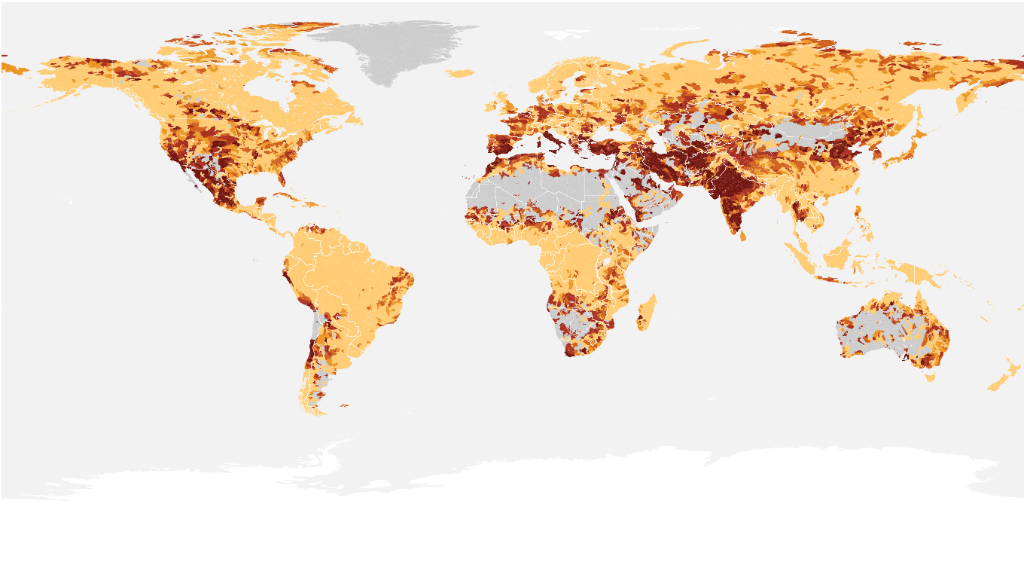Blog
Water Stress: A Global Problem That’s Getting Worse

Water scarcity threatens the health and development of communities around the globe. Climate change is intensifying the problem, pushing governments to find more innovative, collaborative ways to address water stress.
Summary
- Water scarcity happens when communities can’t fulfill their water needs, either because supplies are insufficient or infrastructure is inadequate. Today, billions of people face some form of water stress.
- Countries have often cooperated on water management. Still, there are a handful of places where transboundary waters are driving tensions, such as the Nile Basin.
- Climate change will likely exacerbate water stress worldwide, as rising temperatures lead to more unpredictable weather and extreme weather events, including floods and droughts.
Billions of people around the world lack adequate access to one of the essential elements of life: clean water. Although governments and aid groups have helped many living in water-stressed regions gain access in recent years, the problem is projected to get worse with the harmful effects of global warming and population growth.
Water stress can differ dramatically from one place to another, in some cases causing wide-reaching damage, including to public health, economic development, and global trade. It can also drive mass migrations and spark conflict. Now, pressure is mounting on countries to implement more sustainable and innovative practices and to improve international cooperation on water management
Water stress or scarcity occurs when demand for safe, usable water in a given area exceeds the supply. On the demand side, the vast majority—roughly 70 percent—of the world’s freshwater is used for agriculture, while the rest is divided between industrial (19 percent) and domestic uses (11 percent), including for drinking. On the supply side, sources include surface waters, such as rivers, lakes, and reservoirs, as well as groundwater, accessed through aquifers.
But scientists have different ways of defining and measuring water stress, taking into account a variety of factors including seasonal changes, water quality, and accessibility. Meanwhile, measurements of water stress can be imprecise, particularly in the case of groundwater. “Any numbers out there have to be taken with a grain of salt,” says Upmanu Lall, a Columbia University professor and water expert. “None of these definitions are typically accounting for groundwater usage, or groundwater stock.”
What causes water scarcity?
Water scarcity is often divided into two categories: physical scarcity, when there is a shortage of water because of local ecological conditions; and economic scarcity, when there is inadequate water infrastructure.
The two frequently come together to cause water stress. For instance, a stressed area can have both a shortage of rainfall as well as a lack of adequate water storage and sanitation facilities. Experts say that even when there are significant natural causes for a region’s water stress, human factors are often central to the problem, particularly with regard to access to clean water and safe sanitation.
“Almost always the drinking water problem has nothing to do with physical water scarcity,” says Georgetown University’s Mark Giordano, an expert on water management. “It has to do with the scarcity of financial and political wherewithal to put in the infrastructure to get people clean water. It’s separate.”
At the same time, some areas that suffer physical water scarcity have the infrastructure that has allowed life there to thrive, such as in Oman and the southwestern United States.
A variety of authorities, from the national level down to local jurisdictions, govern or otherwise influence the water supply. In the United States, more than half a dozen federal agencies deal with different aspects of water: the Environmental Protection Agency (EPA) enforces regulations on clean water, while the Federal Emergency Management Agency (FEMA) prepares for and responds to water disasters. Similar authorities exist at the state and local levels to protect and oversee the use of water resources, including through zoning and rehabilitation projects.
Which regions are most water-stressed?
The Middle East and North Africa (MENA) is the worst off in terms of physical water stress, according to most experts. MENA receives less rainfall than other regions, and its countries tend to have fast-growing, densely populated urban centers that require more water. But many countries in these regions, especially wealthier ones, still meet their water needs. For example, the United Arab Emirates (UAE) imports nearly all of its food, alleviating the need to use water for agriculture. The UAE and other wealthy MENA countries also rely heavily on the desalination of abundant ocean water, albeit this process is an expensive, energy-intensive one.
